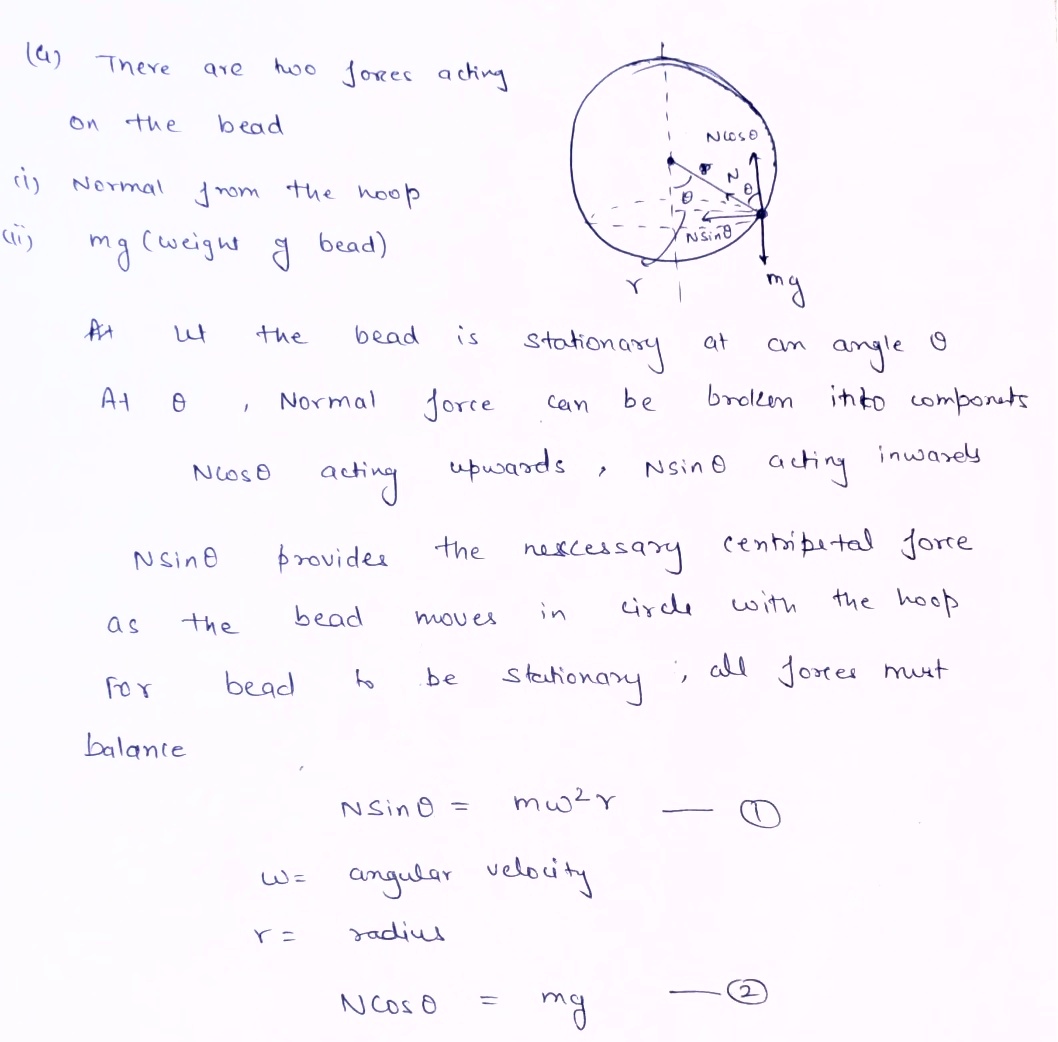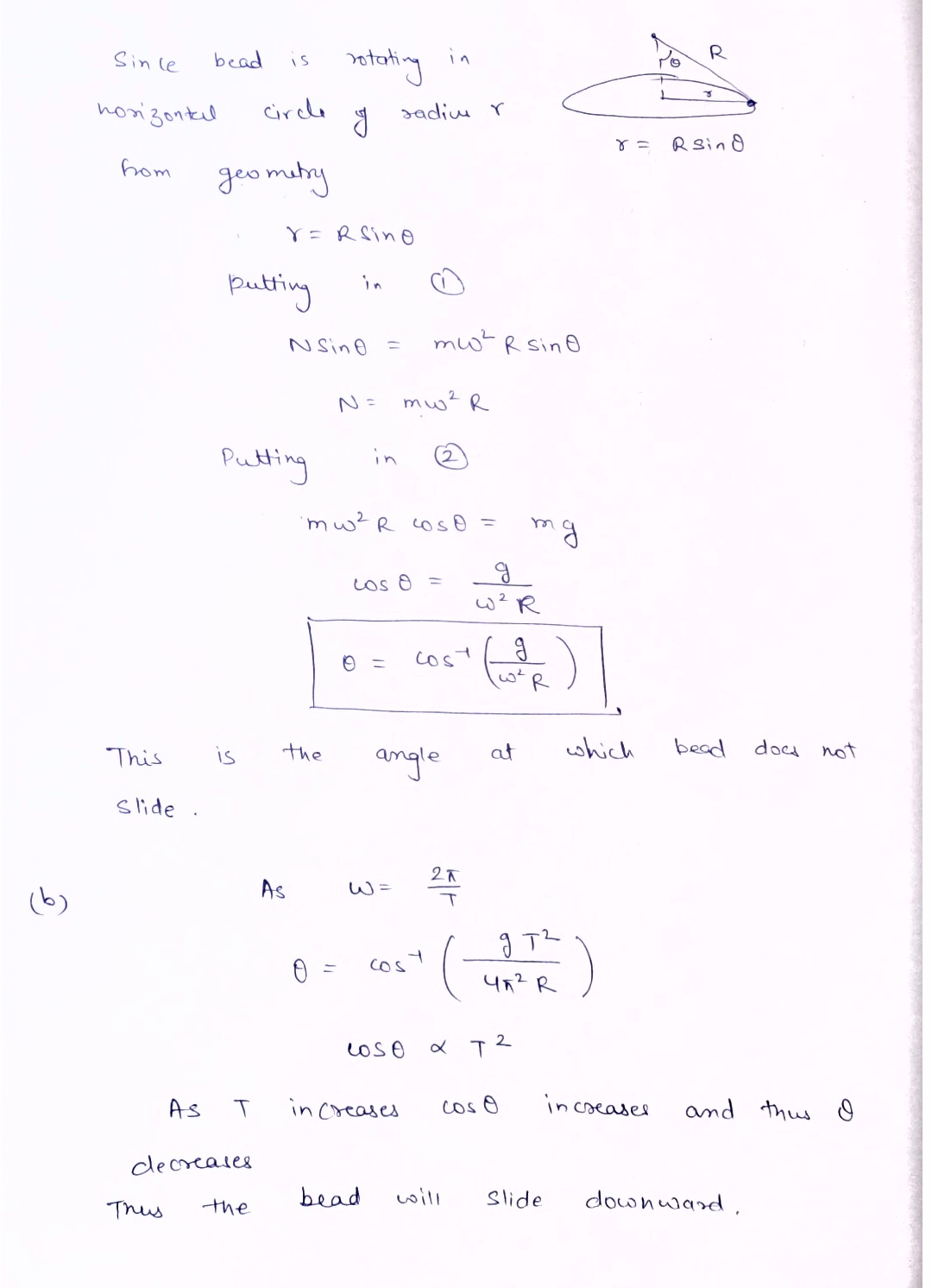Find the angle 0 at which the bead would not slide o
Related questions
Question

Transcribed Image Text:**Problem 2: Rotating Bead on a Hoop**
A bead on a wire can slide with negligible friction on a hoop with radius \( R \), rotating at a constant rate with a period \( T \).
**Tasks:**
**a. (4 pts)** Determine the angle \( \theta \) at which the bead will not slide on the hoop. Express your answer using the given values and constants (e.g., \( g \)).
*Note:* Use a Free Body Diagram (FBD) and properly set up Newton’s Second Law (NII) equations. Perform algebraic calculations.
**b. (2 pts)** If the period increases, will the bead slide upward, slide downward, or remain in place? Justify your answer using the result from part a.
**c. (2 pts)** Is it possible for \( \theta \) to be greater than or equal to \( 90^\circ \)? Justify your answer using Free Body Diagrams (FBDs) and evidence from part a.
**d. (2 pts)** Are there any other angles at which the bead will not slide on the hoop? Explain your reasoning.
*Note:* Consider the forces carefully. Use FBDs.
**Diagram Description:**
The diagram shows a vertical hoop with a rotating axis and a bead fixed at an angle \( \theta \) from the vertical. An arrow indicates the direction of rotation. A tangent line shows the angle \( \theta \) from the vertical axis to the bead's position.
Expert Solution
Step 1

Step 2

Step by step
Solved in 3 steps with 3 images
